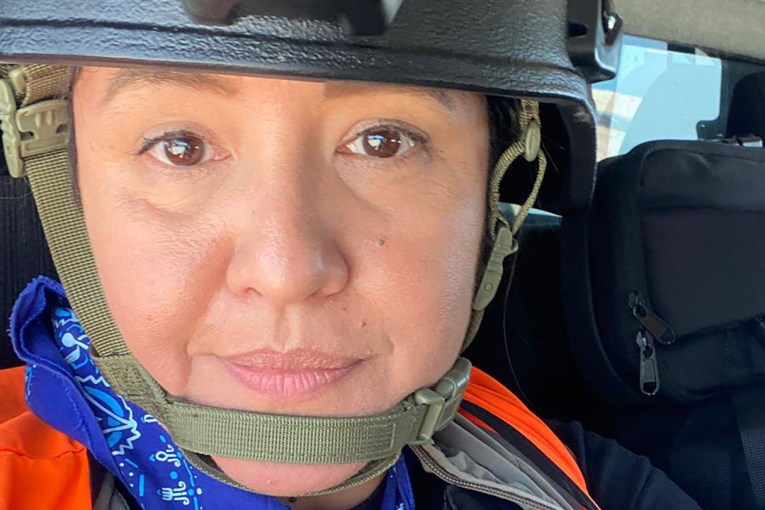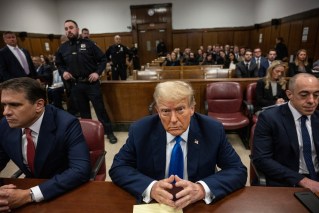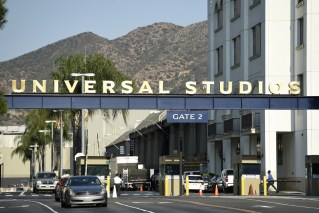The death of George Floyd reignited a movement. What happens now?
George Floyd had been dead only hours before the movement began.
Driven by a terrifying video and word of mouth, people flooded the South Minneapolis intersection where he was killed shortly after Memorial Day, demanding an end to police violence against Black Americans.
The moment of collective grief and anger swiftly gave way to a year-long, nationwide deliberation on what it means to be Black in America.
First came protests, in large cities and small towns across the nation, becoming the largest mass protest movement in US history.
Then, over the next several months, nearly 170 Confederate symbols were renamed or removed from public spaces. The Black Lives Matter slogan was claimed by a nation grappling with Floyd’s death.
Over the next 11 months, calls for racial justice would touch seemingly every aspect of American life on a scale that historians say had not happened since the civil rights movement of the 1960s.
On Tuesday, Derek Chauvin, the white police officer who knelt on Floyd, was convicted of two counts of murder as well as manslaughter.
The verdict brought some solace to activists for racial justice who had been riveted to the courtroom drama for the past several weeks.
But for many Black Americans, real change feels elusive, particularly given how relentlessly the killing of Black men by the police has continued, including the recent shooting death of Daunte Wright in a Minneapolis suburb.
There are also signs of backlash: Legislation that would reduce voting access, protect the police and effectively criminalise public protests has sprung up in Republican-controlled state legislatures.

Protesters with bubbles and lights, in Portland, Oregon, on July 29. Photo: NYT
The entire arc of the Floyd case – from his death and the protests through the trial and conviction of Chauvin – played out against the backdrop of the coronavirus pandemic, which further focused attention on the nation’s racial inequities: People of colour were among those hardest hit by the virus and by the economic dislocation that followed.
And for many, Floyd’s death carried the weight of other episodes of police violence over the past decade, a list that includes the deaths of Eric Garner, Laquan McDonald, Michael Brown and Breonna Taylor.
In the months after Floyd’s death, some change has been concrete.
Scores of policing reform laws were introduced at the state level.
Corporations pledged billions to racial equity causes, and the NFL apologised for its failure to support protests against police violence by its Black players.
Even the backlash was different. Racist statements by dozens of public officials, from mayors to fire chiefs, related to Floyd’s death – perhaps tolerated before – cost them their jobs and sent others to anti-racism training.
And, at least at first, American views on a range of questions related to racial inequality and policing shifted to a degree rarely seen in opinion polling.
Americans, and white Americans in particular, became much more likely than in recent years to support the Black Lives Matter movement, to say that racial discrimination is a big problem and to say that excessive policing disproportionately harms African-Americans.
Floyd’s death, most Americans agreed early last summer, was part of a broader pattern – not an isolated episode.
A New York Times poll of registered voters in June showed that more than one in 10 had attended protests.
And at the time, even Republican politicians in Washington were voicing support for police reform.
But the shift proved fleeting for Republicans – both elected leaders and voters. As some protests turned destructive and as Donald Trump’s re-election campaign began using those scenes in political ads, polls showed white Republicans retreating in their views that discrimination is a problem.

Protesters rally in New York in June. Over the next 11 months after the death of George Floyd, calls for racial justice touched nearly every aspect of American life on a scale that historians say has not happened since the civil rights movement of the 1960s. Photo: NYT
Increasingly in the campaign, voters were given a choice: They could stand for racial equity or with law and order. Republican officials once vocal about Floyd fell silent.
“If you were on the Republican side, which is really the Trump side of this equation, then the message became, ‘No we can’t acknowledge that that was appalling because we will lose ground,’” said Patrick Murray, the director of the Monmouth University Polling Institute.
“‘Our world view is it’s us against them. And those protesters are going to be part of the them’.”
Floyd’s death did, however, drive some changes, at least for now, among non-Republican white Americans in their awareness of racial inequality and support for reforms.
And it helped cement the movement of college-educated suburban voters, already dismayed by what they saw as Trump’s race-baiting, toward the Democratic Party.
“The year 2020 is going to go down in our history books as a very significant, very catalytic time,” said David Bailey, whose Richmond, Virginia-based nonprofit organisation, Arrabon, helps churches around the country do racial reconciliation work.
“People’s attitudes have changed at some level. We don’t know fully all of what that means. But I am hopeful I am seeing something different.”
But even among Democratic leaders, including mayors and President Joe Biden, dismay over police violence has often been paired with warnings that protesters avoid violence too.
That association – linking Black political anger and violence – is deeply rooted in America and has not been broken in the past year, said Davin Phoenix, a political scientist at the University of California, Irvine.
“Before Black people even get a chance to process their feelings of trauma and grief, they’re being told by people they elected to the White House – that they put into power – ‘Don’t do this, don’t do that,’” Dr Phoenix said.
“I would love if more politicians, at least those that claim to be allied, turn to the police and say, ‘Don’t do this, don’t do that.’”

People hug at George Floyd Square in Minneapolis, after the jury found Derek Chauvin guilty of murdering George Floyd. Photo: NYT
The protests that followed Floyd’s death became part of the increasingly acrimonious American conversation over politics.
Most were peaceful, but there was looting and property damage in some cities, and those images circulated frequently on television and social media. Republicans cited the protests as an example of the left losing control.
Blue Lives Matter flags hung from houses last autumn. When support for Trump boiled over into violence at the US Capitol on January 6, conservatives expressed anger at what they said was a double standard for how the two movements had been treated.
Biden took office in January vowing to make racial equity central to every element of his agenda – to how coronavirus vaccines are distributed, where federal infrastructure is built, how climate policies are crafted.
He quickly made changes any Democratic administration most likely would have made, restoring police consent decrees and fair housing rules.
But, in a sign of the unique moment in which Biden was elected – and his debt to Black voters in elevating him – his administration has also made more novel moves, like declaring racism a serious threat to public health and singling out Black unemployment as a gauge of the economy’s health.
What opinion polling has not captured well is whether white liberals will change the behaviours – like opting for segregated schools and neighbourhoods – that reinforce racial inequality.
Even as the outcry over Floyd’s death has raised awareness of it, other trends tied to the pandemic have only exacerbated that inequality.
That has been true not just as Black families and workers have been disproportionately hurt by the pandemic, but also as white students have fared better amid remote education and as white home owners have gained wealth in a frenzied housing market.
In a national sample of white Americans this year, Jennifer Chudy, a political scientist at Wellesley College, found that even the most racially sympathetic were more likely to endorse limited, private actions.
These included educating oneself about racism or listening to people of colour rather than, for example, choosing to live in a racially diverse community or bringing racial issues to the attention of elected officials and policymakers.
Still, historians say it is hard to overstate the galvanising effect of Floyd’s death on public discourse, not just on policing but also on how racism is embedded in the policies of public and private institutions.
Some Black business leaders have spoken in unusually personal terms about their own experiences with racism, with some calling out the business world for doing far too little over the years – “Corporate America has failed Black America,” said Darren Walker, the president of the Ford Foundation and a board member at PepsiCo, Ralph Lauren and Square – and dozens of brands made commitments to diversify their workforces.
Public outcries over racism in the United States erupted across the world, spurring protest in the streets of Berlin, London, Paris and Vancouver, British Columbia, and in capitals in Africa, Latin America and the Middle East.
White Americans unfamiliar with the concept of structural racism drove books on the topic to the top of bestseller lists.
–New York Times








